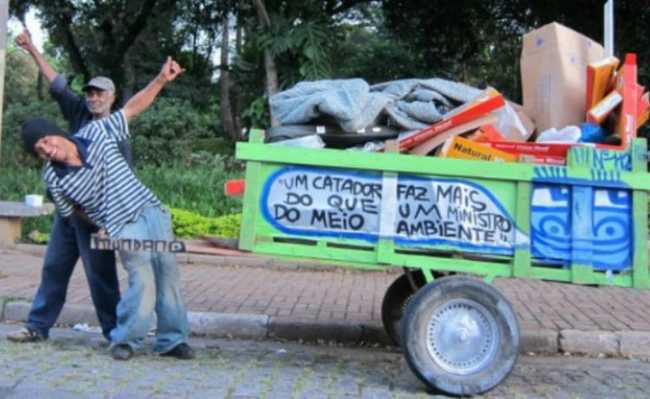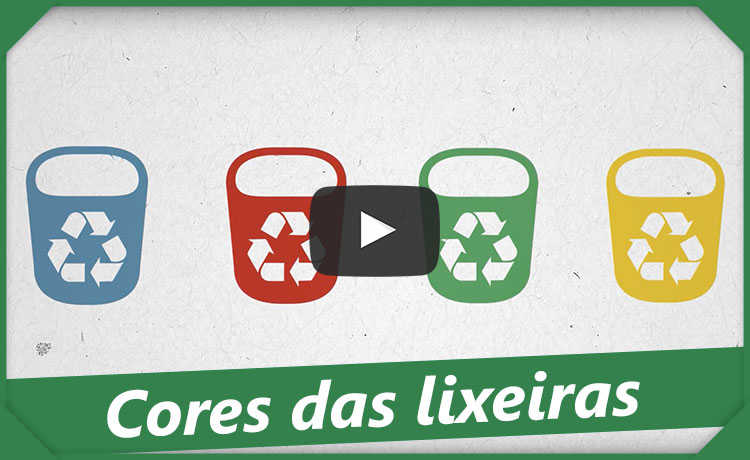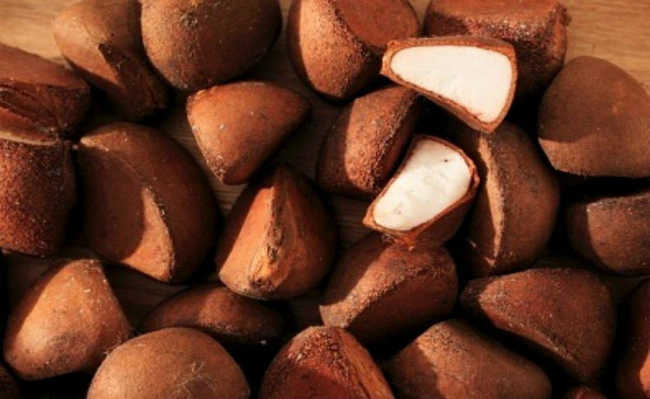Collectors are responsible for 90% of recycled waste in Brazil
Even so, many of these professionals suffer from prejudice and devaluation of their work.

Image: Pimp my cart/publicity.
As the most populous city in Brazil, São Paulo produces an average of 20 thousand tons of garbage every day. Approximately one kilogram and six hundred grams per person. According to Pedro Jacobi, professor of environmental science at the University of São Paulo (USP) and member of the board of directors of the greenpeace, the challenge is “to produce less waste, recycle more and more and remanufacture”.
A group that goes unnoticed by society and that is directly involved in the waste recycling process is the waste picker. Data from the Institute for Applied Economic Research (IPEA) show that collectors are responsible for almost 90% of recycled waste in Brazil.
According to the National Movement of Recyclable Material Collectors, there are 800,000 professionals of this type in activity in the country and approximately 85,000 members of the National Movement.
Most of these workers found an alternative to unemployment in the profession. In the quarter from July to September this year, the Brazilian Institute of Geography and Statistics (IBGE) counted 12.4 million unemployed people across the country.
The case of 76-year-old Euclides Filomeno reflects this reality. The collector, who worked as a construction contractor and plumber, lives in Jardim São Luiz and, every day, travels to the Pinheiros neighborhood to work. “I get here at 7:30 am, take the cart and go until 5:00 pm”, he explains. For Euclides, another factor that reinforces unemployment is age. “They don't give jobs to the elderly”, he vents.
Raimundo Henrique, 50 years old, reinforces the co-worker's idea: “Time passes and we become disposable. Companies want younger people.” Unemployed for two years, Raimundo found in his work as a collector an opportunity to pay for his daughters' college education.
Other problems faced by garbage collectors are prejudice and lack of respect. Euclides reports that he has been disrespected several times by drivers. At the time of the report, he said that a girl had just called him names, telling him to walk on the sidewalk. “She said she paid dearly for the right to ride a car on the street. I said that I also paid taxes and that I had the same right as her”, she says.
Regarding the weight that scavengers carry, there is no exact number. “It's between 150 and 200 kilos, there's no limit”, says Euclides. A picker since he was 10 years old, Gabriel Felipe is now 32 years old and says that, due to the weight he is carrying, he has already suffered a serious accident with the cart. “I didn't know how to distribute things well on the cart and when I went out with it [the cart] things fell on me,” he says. He says that that day the cart was filled with approximately 800 kilos of recyclable materials.
Some pickers do not think about changing their profession, as is the case with 66-year-old José Rafael, known by his co-workers as Chicão. “I don't make plans anymore,” says José, who is homeless. He also reports that it is necessary to work twice as hard to get a good income and that even so, he has no prospect of a better future. “No matter how hard you try, you can't get out of your seat,” he confesses.

Image: Pimp my cart/publicity.
'Pimp my carroça', a movement that promotes the visibility of collectors, carries out creative actions with the use of graffiti to improve these workers' self-esteem. Only in 2016, the project was in Cuiabá, São Paulo, Bragança Paulista, Brasília and Manaus. At events, carts, bicycles, carriages and other means that the scavengers use to carry out the work are restored and customized.
The project started with artist Thiago Mundano, well before the first Pimp My Carroça event. “Art makes the collector less invisible in society and raises awareness in people”, comments Aline Silva, 27, who works in the administrative part of the project. She also points out that society sees the collector as someone marginalized, but that these workers have an entrepreneurial vision of the profession. "Some (pickers) arrive here and say 'in the future I want to have my own junkyard'. There are collectors who have a team with 2, 3 carts. It's an entrepreneurial vision”, explains Aline.
The concept of Pimp My Cart using graffiti as a way to improve the self-esteem and visibility of recyclable collectors has even served as an inspiration for projects outside Brazil. According to Aline, 12 countries have already developed similar initiatives since the creation of the Brazilian project. She also highlights that this dissemination occurs through “word of mouth”. “One of the events, which took place in Afghanistan, was on account of another representative of the Pimp My Cart of Colombia. The artist from Afghanistan liked the idea and held the event,” he says.
Image: Pimp my cart/publicity.
The organization is currently pooling funds to improve the app. cataki . The app, which is already available for iOS and Android, works as a means of contact between the collector and the waste generator. With satellite technology, anyone can identify the nearest waste picker, make contact with him and discard recyclable material. To commemorate the project's five years and help raise funds for the app, an online store with paintings, mini-replica wagons, stickers and T-shirts was created.
In addition to the large events, those who wish to help waste pickers in their region can take action through “Pimpex”. Pimpex works as a mini edition of the events held by the project, in which anyone can get in touch with the Pimp My Cart for the organization to create a crowdfunding campaign. Thus, when the funding target is reached, the creator of Pimpex will receive a kit to customize the chosen cart in their region. There is also the possibility of helping by being a volunteer for the organization.
According to Aline, the institution's challenge for 2018 is to establish partnerships so that more waste pickers can take advantage of the application cataki through cell phone donations.
Also get to know the project Pimp Our Cooperative , which takes the colored graphite to recycling cooperatives .
O eCycle portal offers a search tool that finds the nearest recycling and donation stations. See our page and know where to dispose of your waste.










